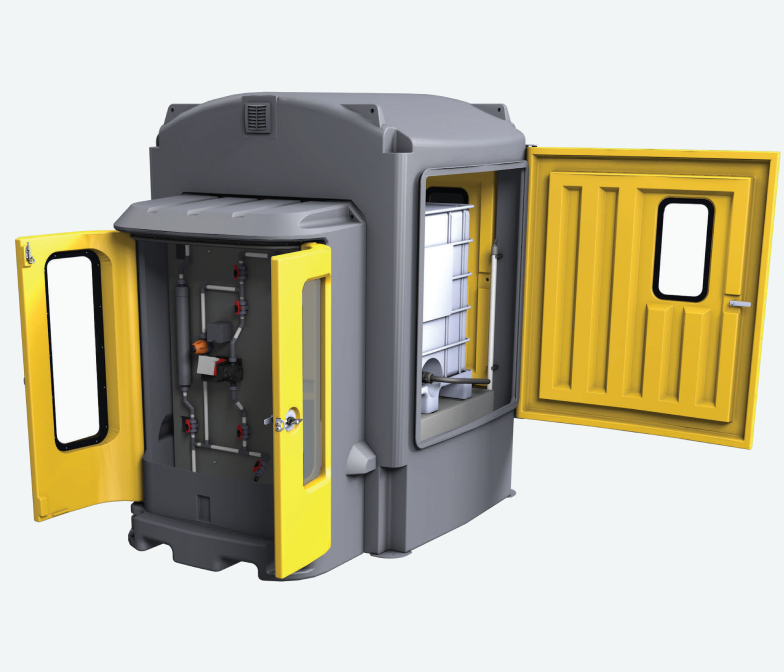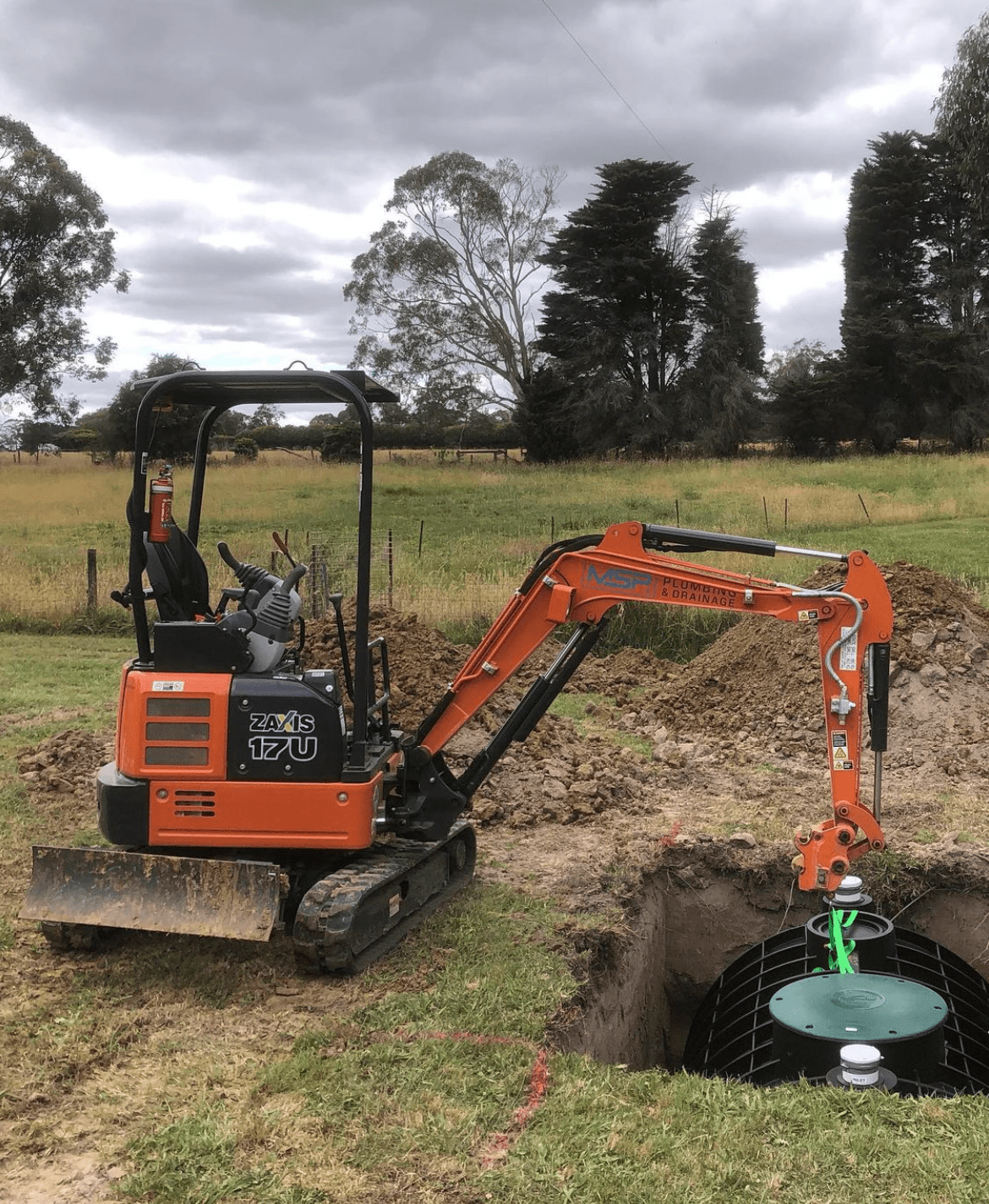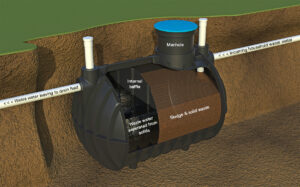So, you’re thinking about installing a septic tank, but there is so much to consider. They are a great option when you may not have access to municipal wastewater systems but not everyone is familiar with how the tanks work or how to care for them. We have pulled together a short overview of a few things you may be wondering about:
- Can I install a septic tank myself?
- What size septic tank do I need?
- How often do I have to empty a septic tank?
- What are the signs of a full septic tank? And what happens if you never pump out your tank?
- How fast does a septic tank fill up?
- Does shower water go into the septic tank?
Firstly, it’s important to understand how a septic tank works.
Septic tanks are generally buried underground and connected to household water outlets or drains. The water and waste flows into the tank where it is separated. Liquids go out to a drain field or other wastewater treatment while solids build up and are then pumped out from time to time by a contractor with a suction truck, to be processed off-site.
So, you’re thinking about installing a septic tank, but there is so much to consider. They are a great option when you may not have access to municipal wastewater systems but not everyone is familiar with how the tanks work or how to care for them. We have pulled together a short overview of a few things you may be wondering about
Can I install a septic tank myself?
Unfortunately, a septic tank is a bit specialised so you aren’t able to DIY this job. Septic tanks must be installed by a licensed plumber and then signed off by your local council authority. This will ensure your warranty is valid, and when you purchase a Polymaster Septic Tank your covered for 10 years.
Polymaster tanks are a one-piece moulded tank, they are lightweight and easy to handle. Lifting lugs are incorporated into the design to make it easy to lower into place. The forward thinking Polymaster engineers designed the septic tanks to minimise the amount of work required on site, these are pre-assembled before leaving the factory, so the plumber can simply position the tank and connect in and out flow pipes! The low profile and compact design minimises the amount of digging required prior to installation, the depth of excavation is minimised, and the hole is easier to backfill after installation. Saving the plumber time during the installation and you in cost.
What size septic tank do I need?
Your local council or plumber will be able to provide a recommendation as to the best size to suit you but as a guide;
Polymaster stock a 3,100ltr Septic Tank that can service 1-5 people and a 4,500ltr Septic Tank to service 6-10 people. Both sizes are compact enough to be easily buried in the backyard.
Depending on the size you choose and the number of people in your home you may need to get the tank pumped out slightly more regularly.
How often do I have to empty a septic tank?
This depends on how much waste your household creates. Remember it is only solids that really build up. The Australian Department of Health recommends pumping tanks every 5 years however it depends how much solid waste is flushed into the tank. Pumping out the tank must be done by a licensed liquid waste contractor who can then take the waste to a processing facility. Your local council will be able to advise if there are any EPA regulations in your area.
IMPORTANT: Nobody should ever enter the Septic Tank – It is a confined space and once operating is a health risk
Polymaster septic tanks come with tamper-proof screws to make sure there are no dangers once the tank is installed and buried.
What are the signs of a full septic tank? And what happens if you never pump out your tank?
- Pooling water
- Slow drains
- Odours
- An overly healthy lawn around the tank
- Sewer backup
- Gurgling pipes
- Trouble flushing
While you may not get all of these signs immediately, it is important that you get your tank pumped out before it gets overfilled. Neglecting to pump out the tank will allow solids to fill the pipes leading to the drainage field which then get blocked. Ultimately a septic system that doesn’t get pumped out may need to be replaced which is an expensive fix for an easily avoidable problem!
How fast does a septic tank fill up?
Again, this depends on how much waste your household produces. Most waste that comes out of a home is liquid with very little solid included. Thankfully this easily leaves the tank to either the municipal waste water system if that is available, or the drain field. The solid portion of waste takes a number of years to build up. As mentioned previously, it is generally recommended to empty tanks every 5 years but some people have reported up to 10 years between pump outs.
Does shower water go into the septic tank?
Regulations require that all water from inside the house go through a septic system, either on site or at a municipal treatment plant. This includes showers, toilets, laundry systems, kitchen and even swimming pools – because of the chemicals.
Water from roof gutters should be the only water leaving a property through the stormwater drains.
Once again, it is best to check your local council regulations for their recommendations in your area.
Remember everyone’s household requirements are different so check with your local plumber and they will be able to assist with council regulations plus give an idea of the right size tank for you.
If you are still thinking about getting a Septic Tank but have more questions, the team at Polymaster would love to help you find the right solution our Septic Tanks
Give them a call today 1800 062 064 to talk Septic or check out the range here!
More Similar News
View all News
Eliminate OH&S issues associated with IBC handling with a purpose-built IBC bund enclosure



